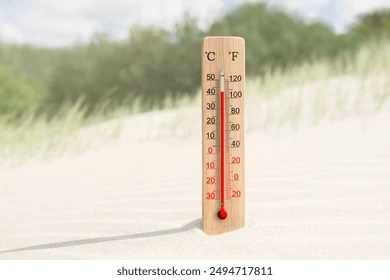Temperature conversion might seem tricky at first, especially when moving from Celsius (°C) to Fahrenheit (°F). Whether you’re traveling to a country that uses Fahrenheit or simply curious about the difference, mastering this conversion can be incredibly useful.
If you’re specifically trying to figure out what 42°C equals in Fahrenheit, you’ve come to the right place. This guide will walk you through the conversion process and explain how Celsius and Fahrenheit scales differ, so you’ll never get stuck again!
Understanding Celsius and Fahrenheit
Temperature is measured in various units across the globe, with Celsius and Fahrenheit being two of the most common scales. Here’s a quick breakdown:
What is Celsius (°C)?
The Celsius scale is widely used worldwide, especially in scientific communities and most countries outside the U.S. It’s based on the properties of water, where:
- 0°C is the freezing point of water.
- 100°C is the boiling point of water (at standard atmospheric pressure).
What is Fahrenheit (°F)?
Fahrenheit is the primary temperature scale used in the United States and a few other countries. On this scale:
- 32°F is the freezing point of water.
- 212°F is the boiling point of water.
Both scales use different starting points and progression steps, which is why converting between them requires a formula.
The Formula for Converting Celsius to Fahrenheit
To convert a temperature from Celsius to Fahrenheit, you’ll use the following formula:
\[ \text{Fahrenheit (°F)} = \text{Celsius (°C)} \times \frac{9}{5} + 32 \]
This formula works because it incorporates the proportional relationship between the two scales and adjusts for their different starting points.
Step-by-Step Guide for Converting 42°C to Fahrenheit
Now, let’s put this formula into practice to find out what 42°C equals in Fahrenheit.
- Start with the formula:
\[ \text{°F} = \text{°C} \times \frac{9}{5} + 32 \]
- Insert 42 for °C:
\[ \text{°F} = 42 \times \frac{9}{5} + 32 \]
- Simplify the fraction:
\[ \frac{9}{5} = 1.8 \]
- Multiply 42 by 1.8:
\[ 42 \times 1.8 = 75.6 \]
- Add 32 to the result:
\[ 75.6 + 32 = 107.6 \]
Final Result:
42°C = 107.6°F
This means that a temperature of 42°C is equivalent to 107.6°F on the Fahrenheit scale.
Why is Temperature Conversion Important?
Understanding how to convert temperatures is useful in many everyday scenarios. Here are a few examples where this skill might come in handy:
- Traveling: If you’re visiting the United States and you encounter weather reports in Fahrenheit, you’ll need to convert them to understand how warm or cold it feels.
- Cooking: Recipes from different countries often list oven temperatures in their native scaling system. Knowing how to convert ensures your baked goods come out perfect!
- Science and Academics: Temperature conversions are often required in fields like chemistry, physics, and meteorology to understand and interpret experiments.
Quick Reference for Common Celsius to Fahrenheit Conversions
Here are some additional conversions to save time:
|
Celsius (°C) |
Fahrenheit (°F) |
|---|---|
|
0°C |
32°F |
|
20°C |
68°F |
|
30°C |
86°F |
|
40°C |
104°F |
|
42°C |
|
|
50°C |
122°F |
Feel free to bookmark this table for quick use!
Pro Tip for Effortless Conversion
If manual calculations aren’t your thing, you can always use an online converter. Tools like Google’s search engine or dedicated conversion apps can instantly provide accurate results for any temperature.
To try it right now, type “42 C to F” in Google, and you’ll immediately see the correct result.
Key Takeaways
- The formula for converting Celsius to Fahrenheit is \(\text{°F} = \text{°C} \times \frac{9}{5} + 32\).
- Using this formula, we found that 42°C = 107.6°F.
- Temperature conversions are essential for travel, cooking, and scientific applications.
Understanding how to move between these two scales can make life a whole lot easier, whether you’re planning a summer holiday or double-checking a recipe.

















